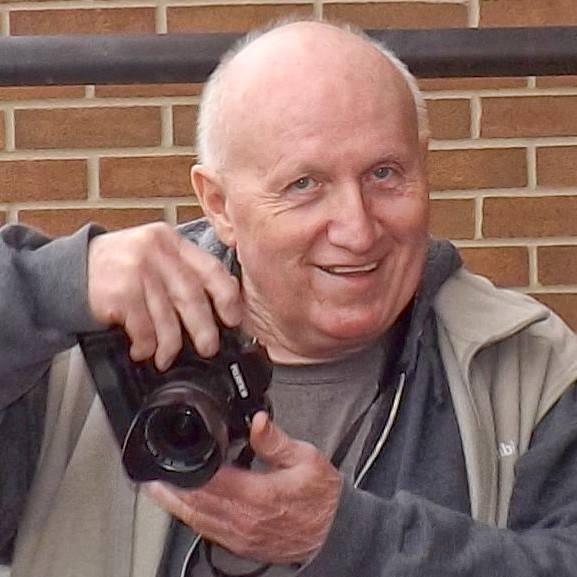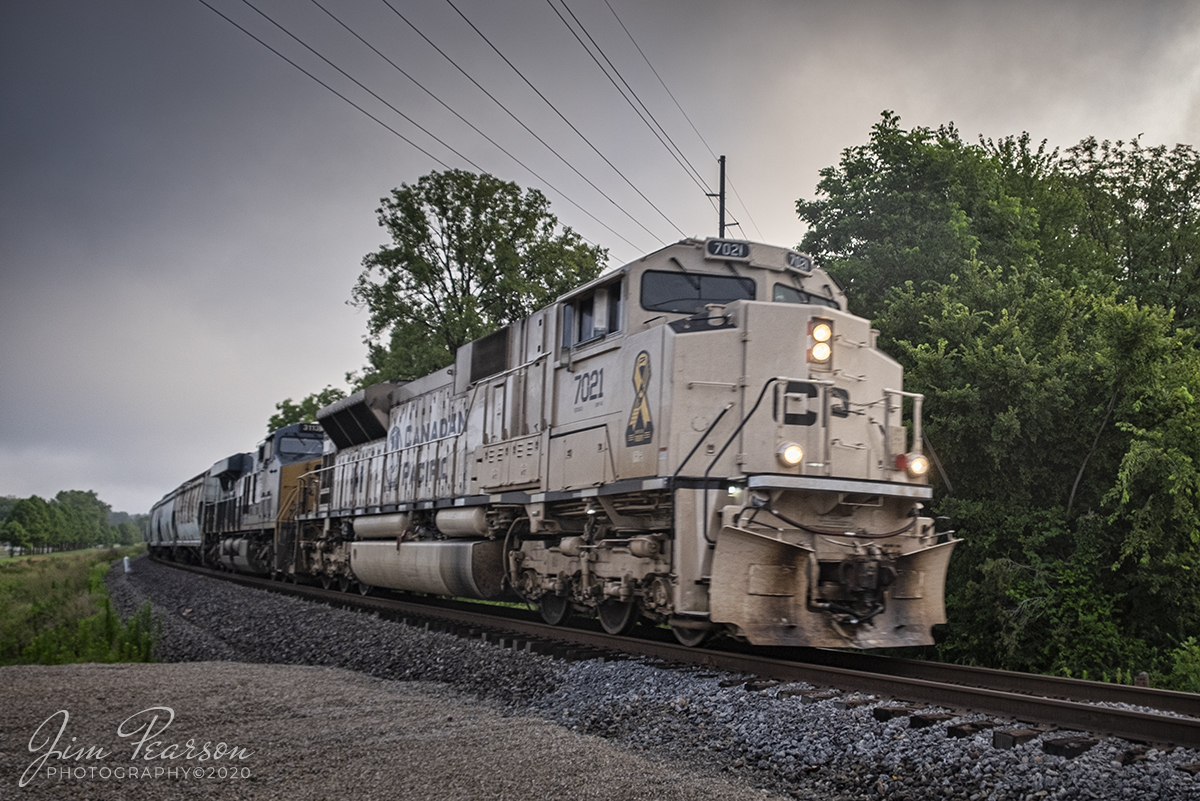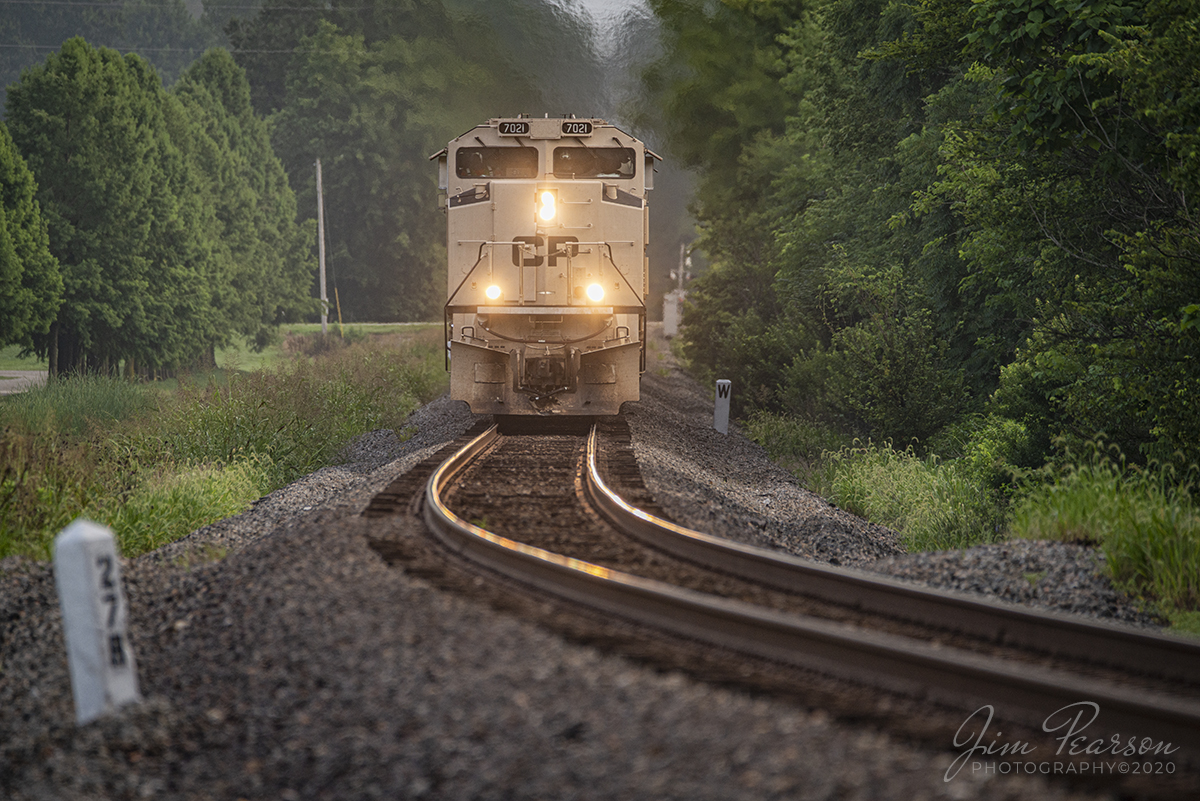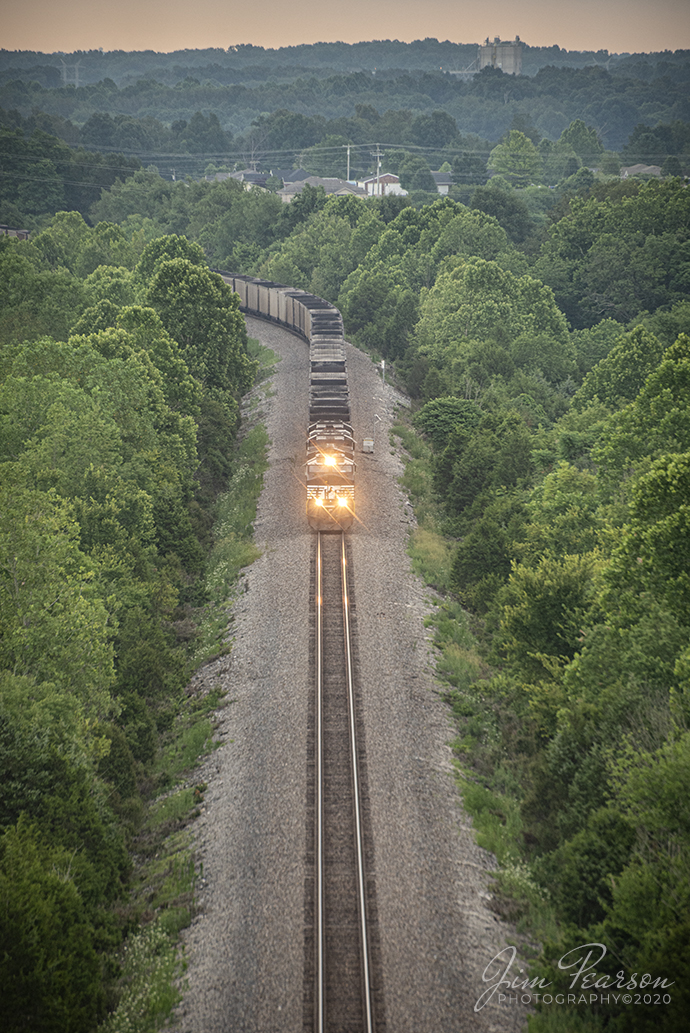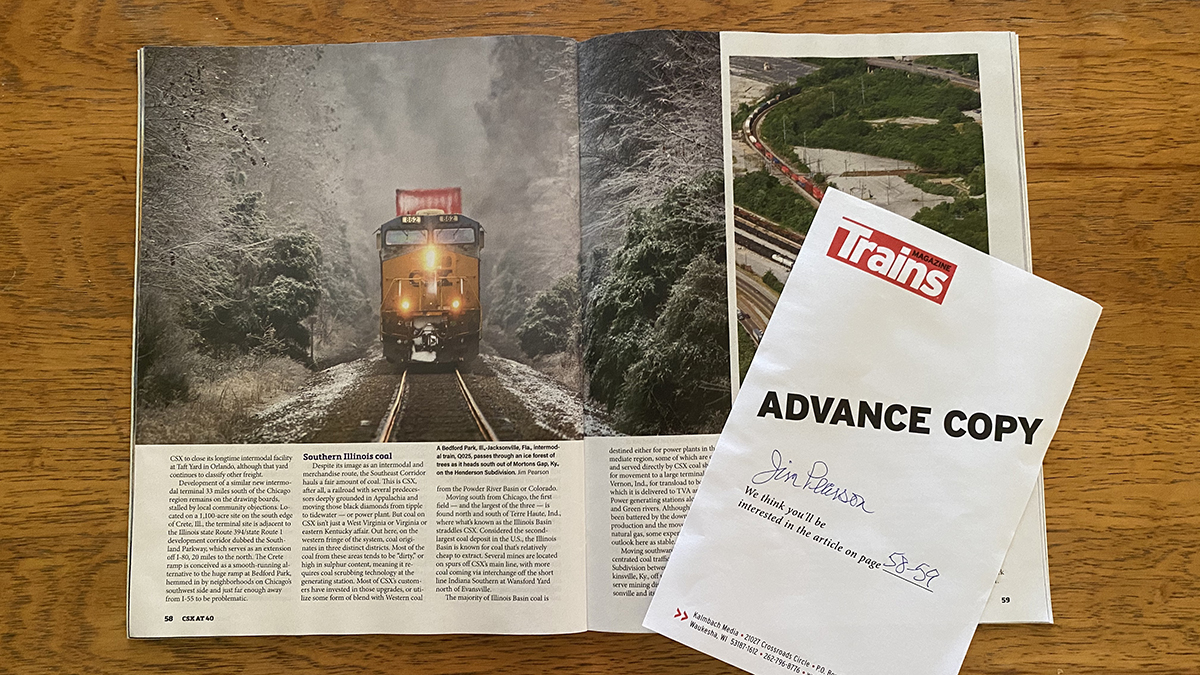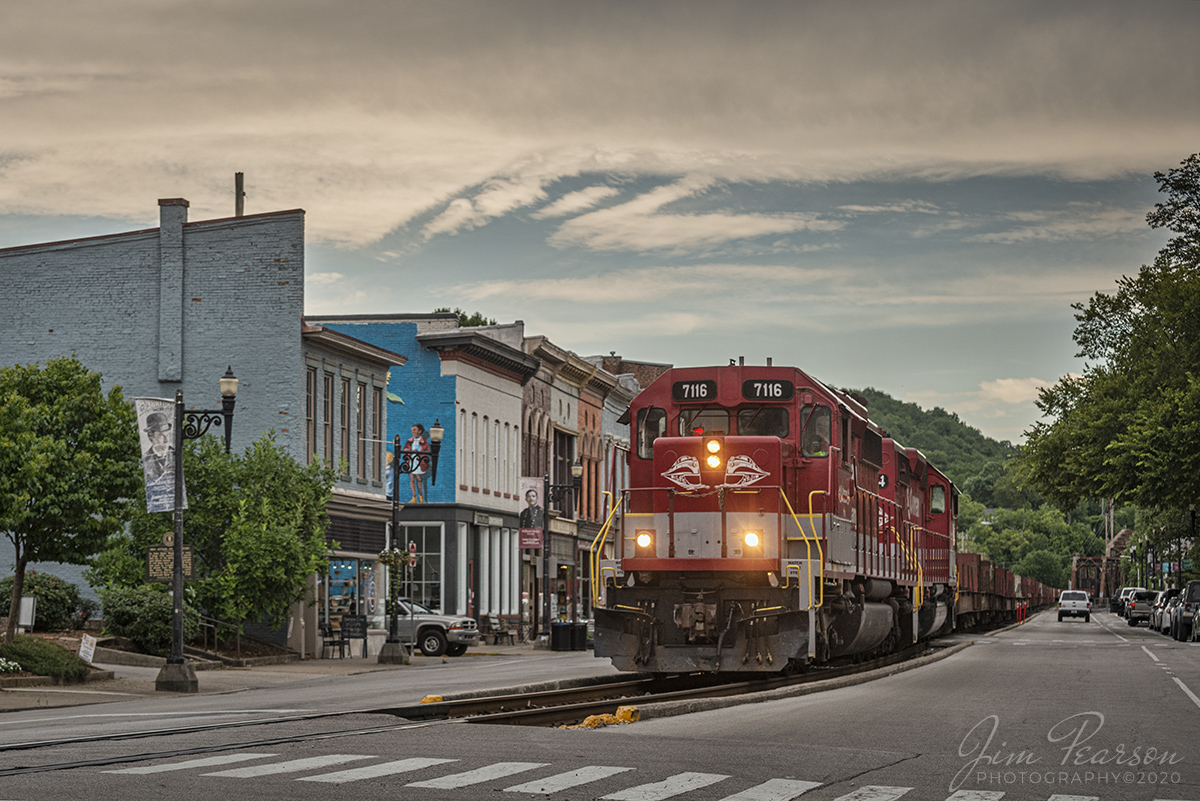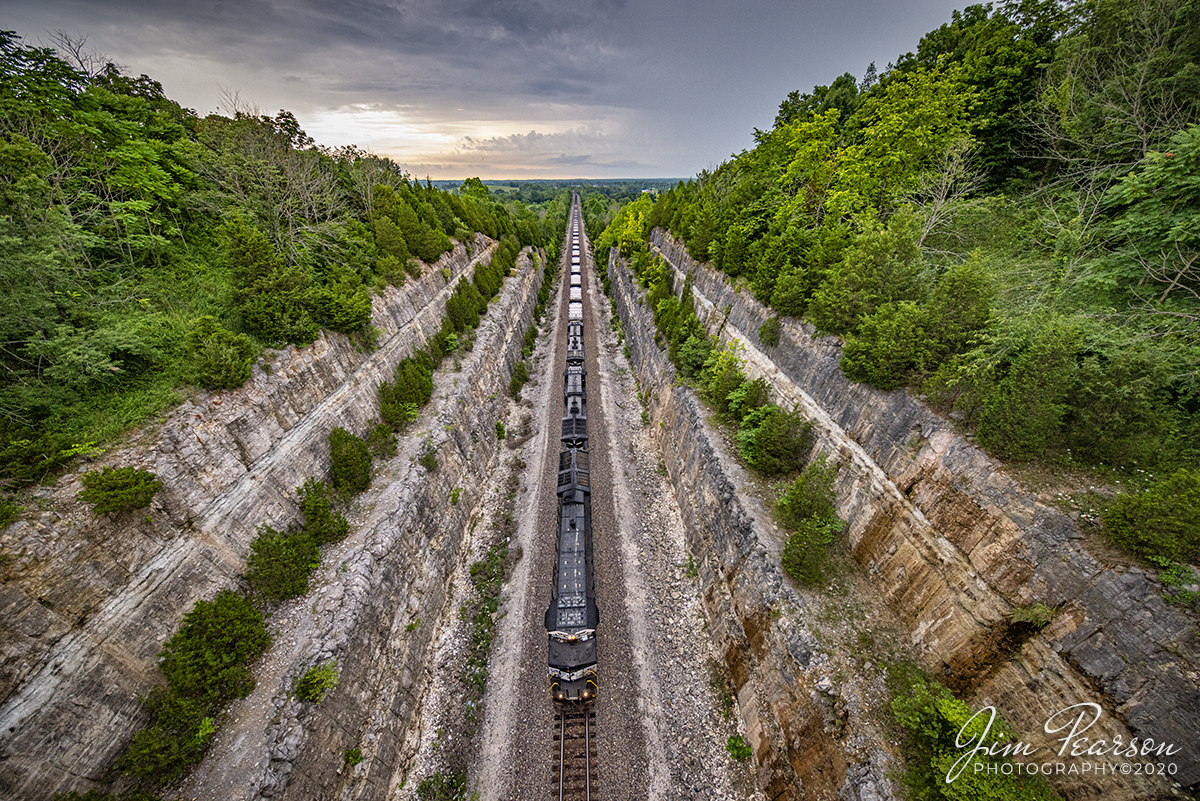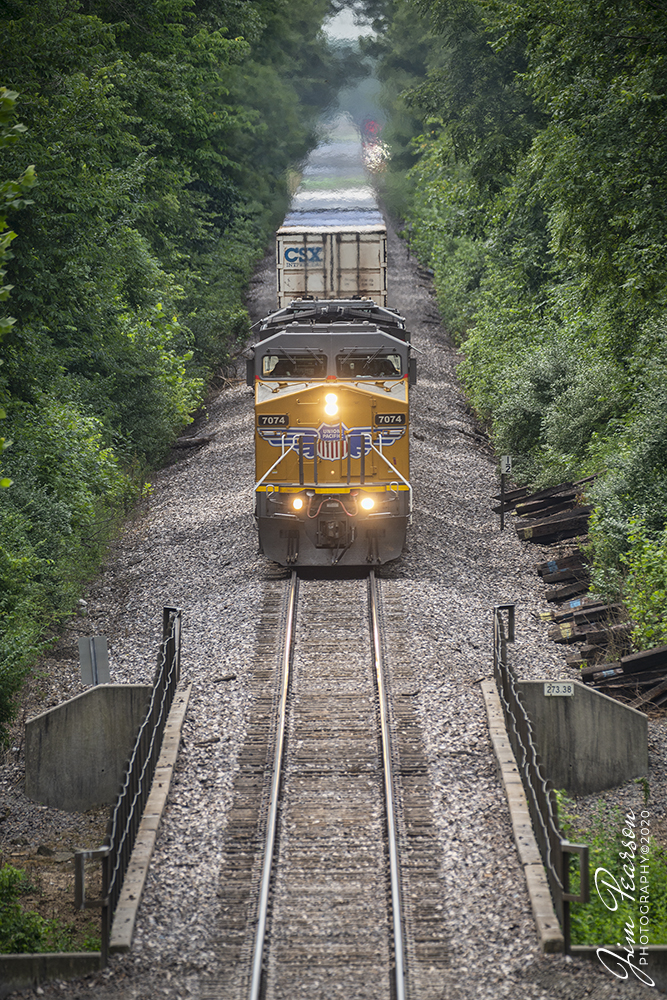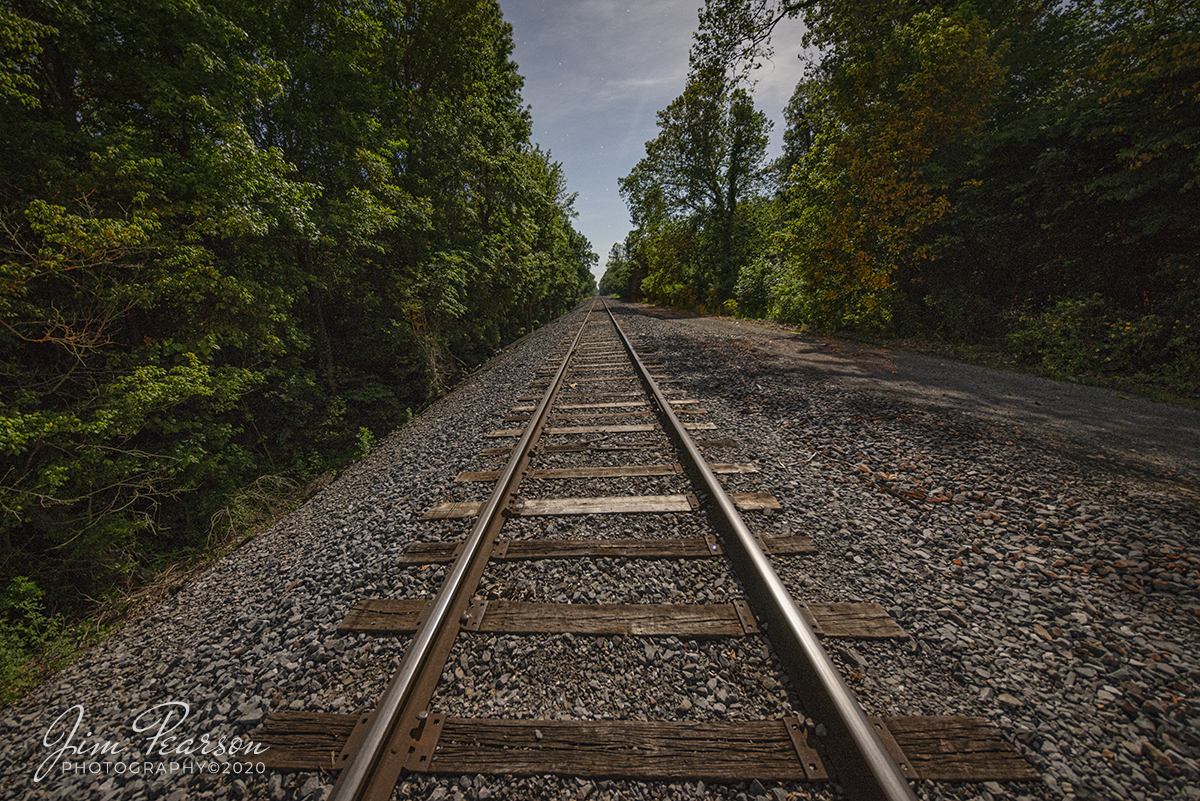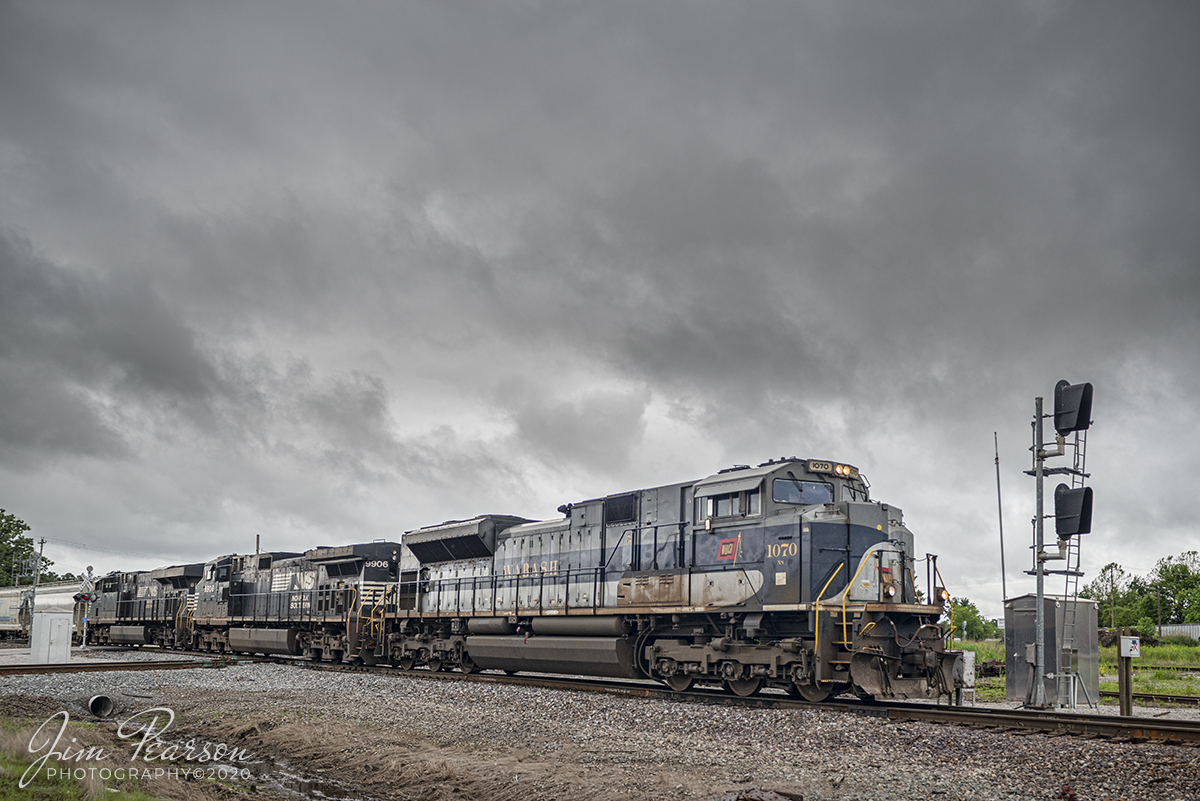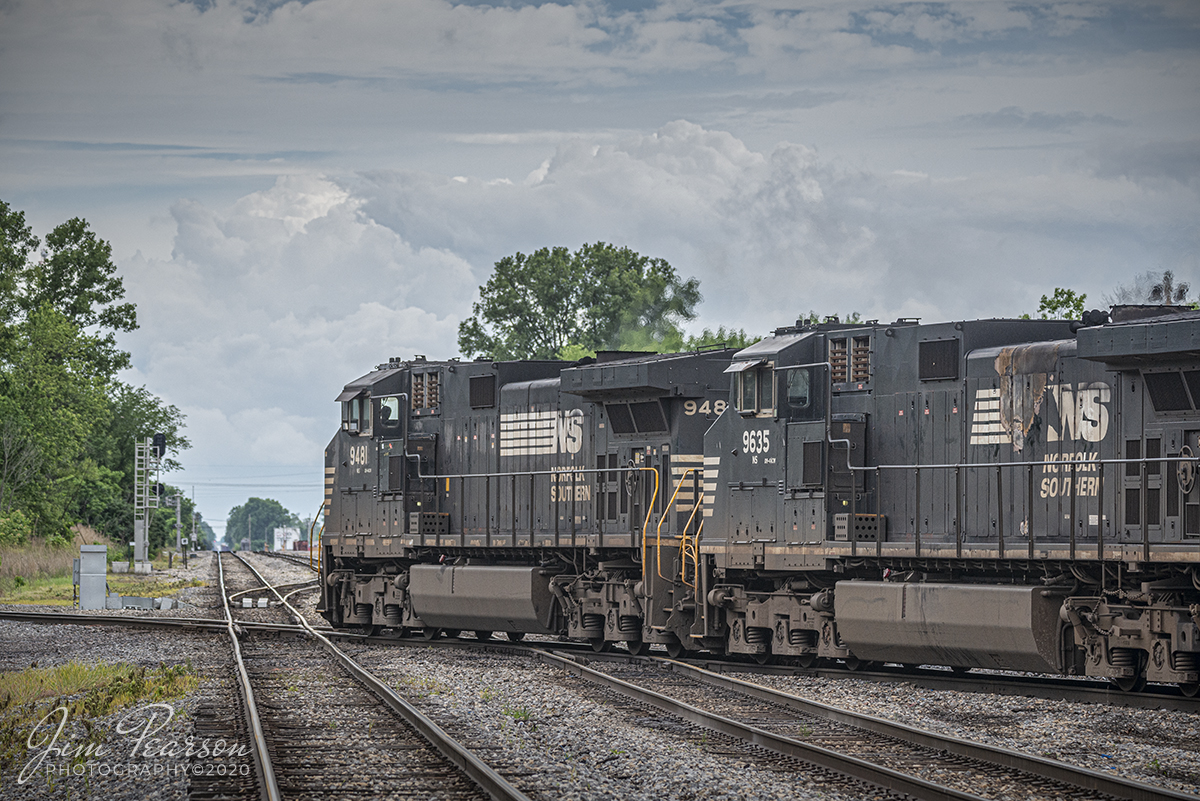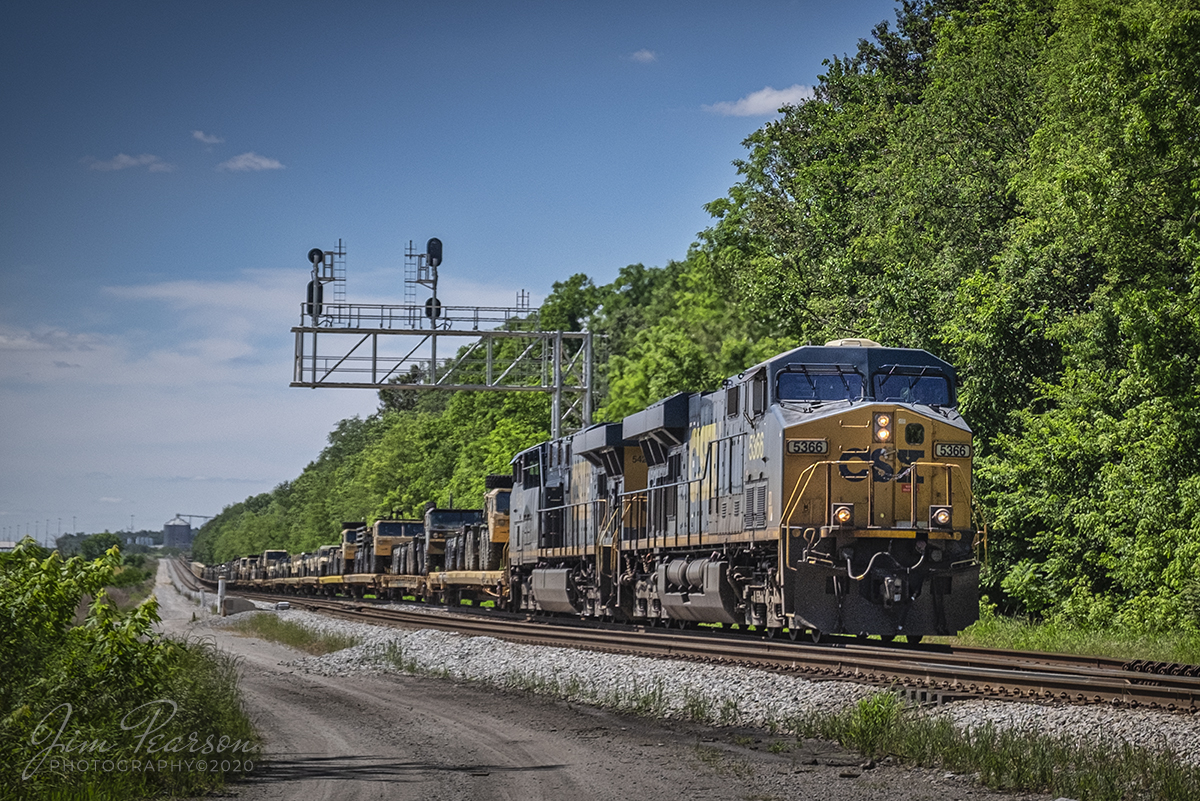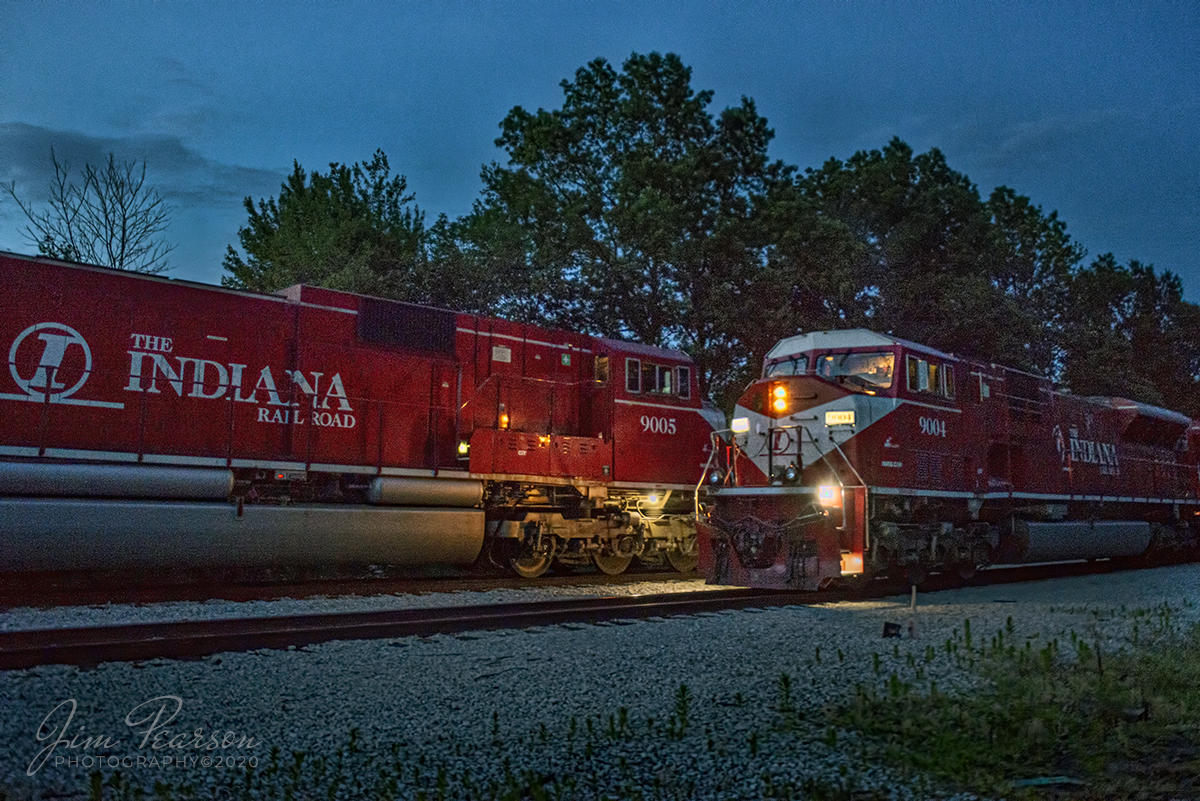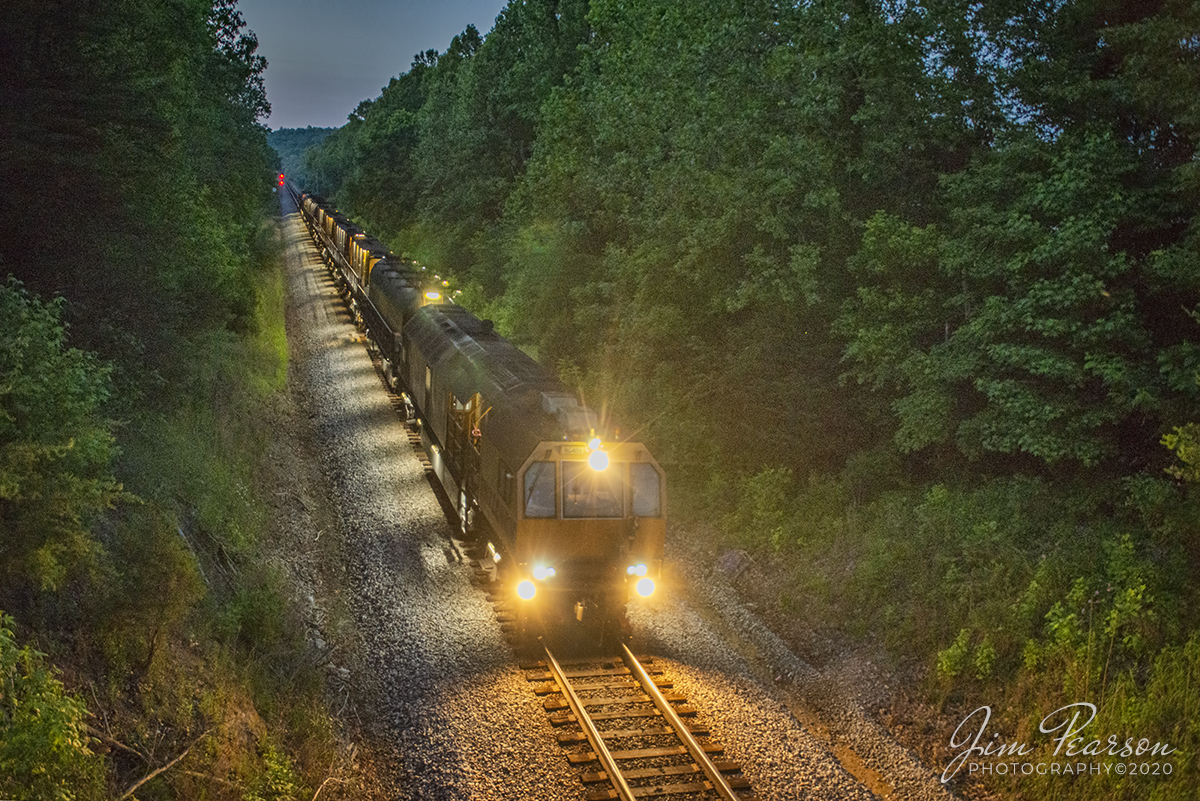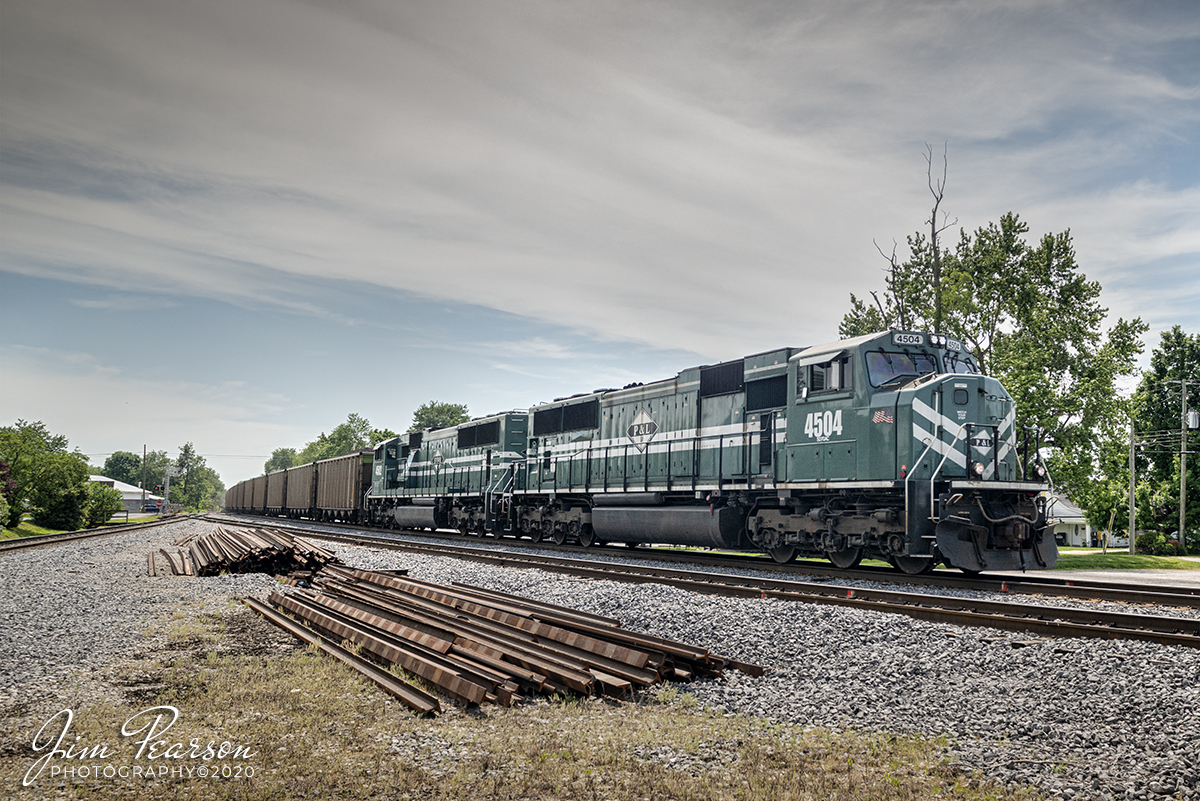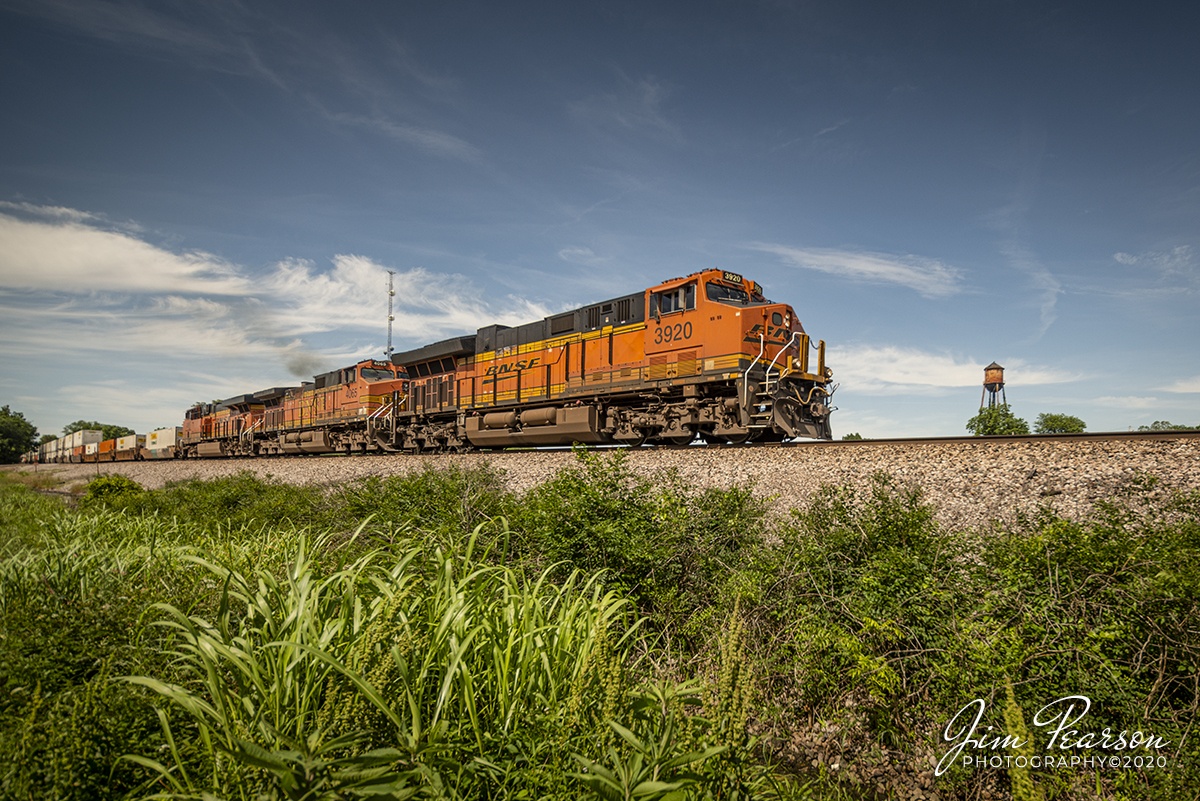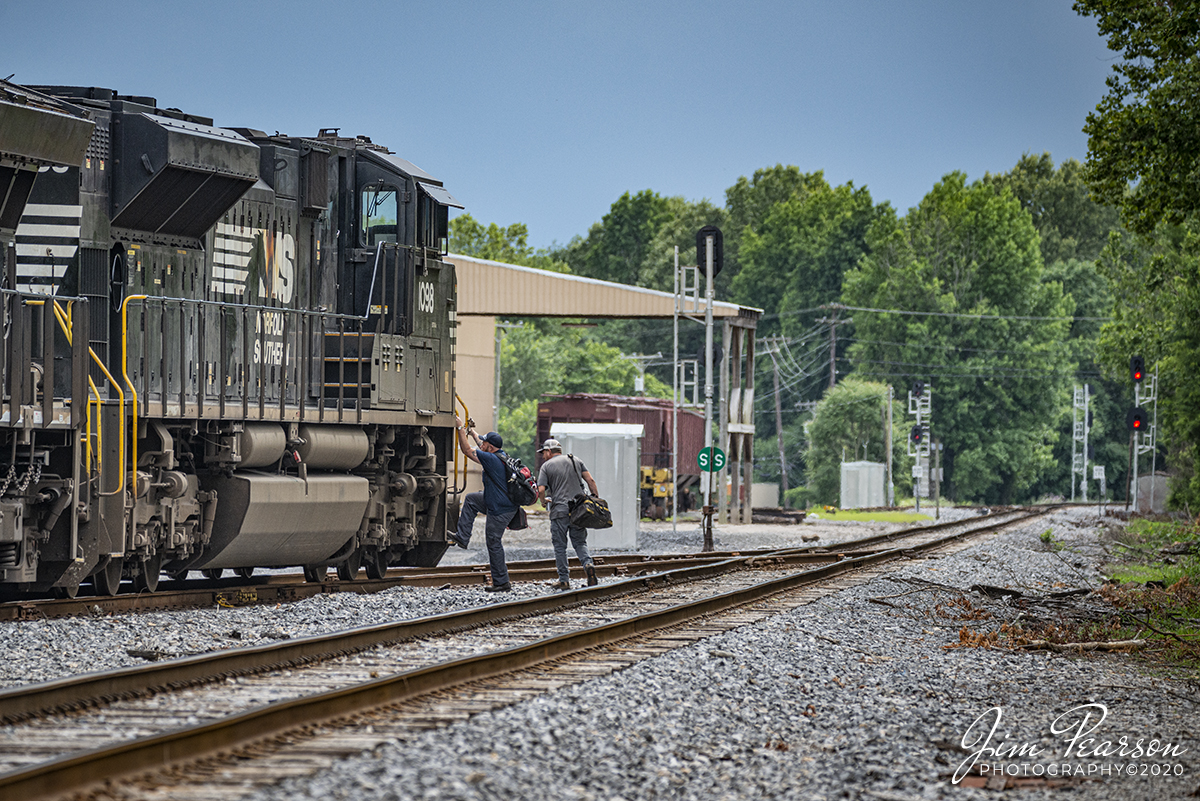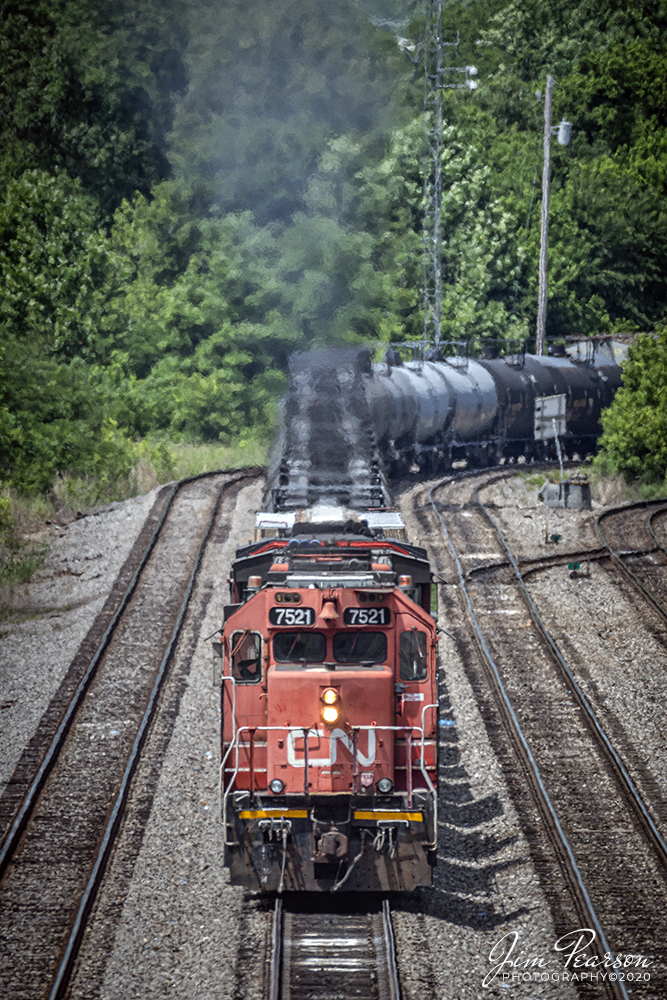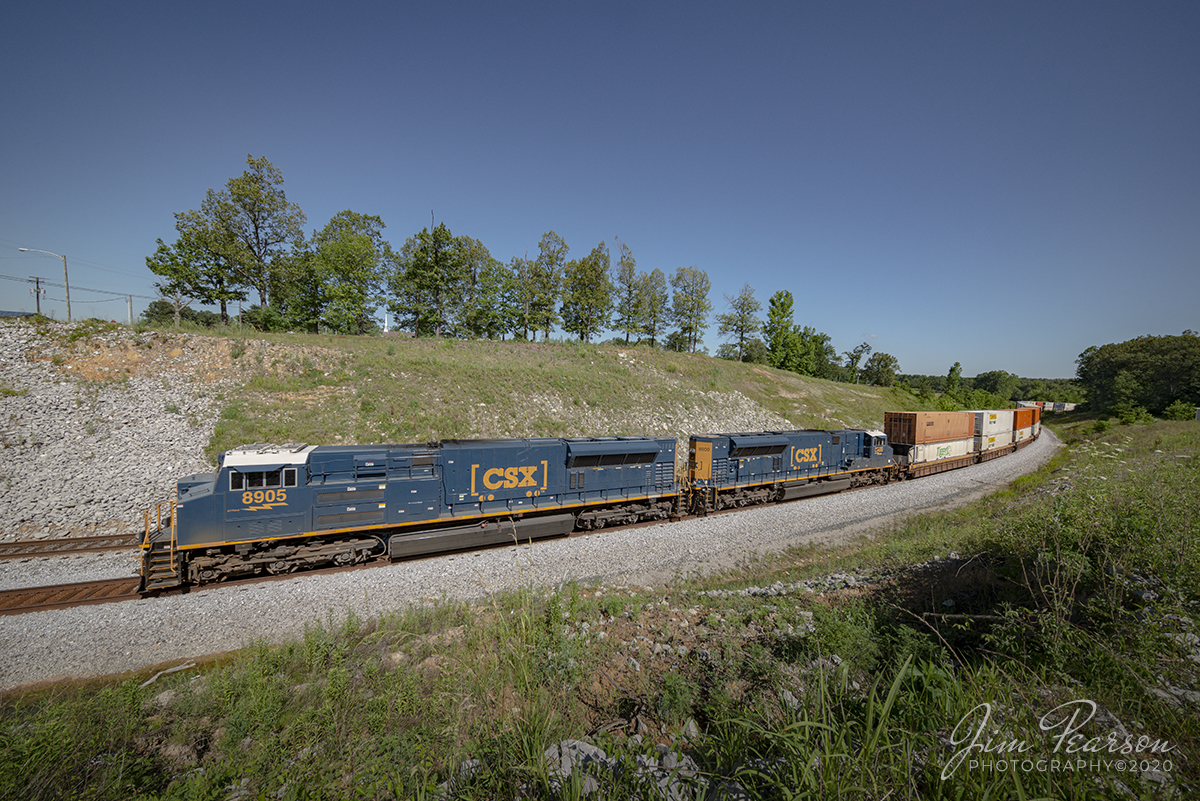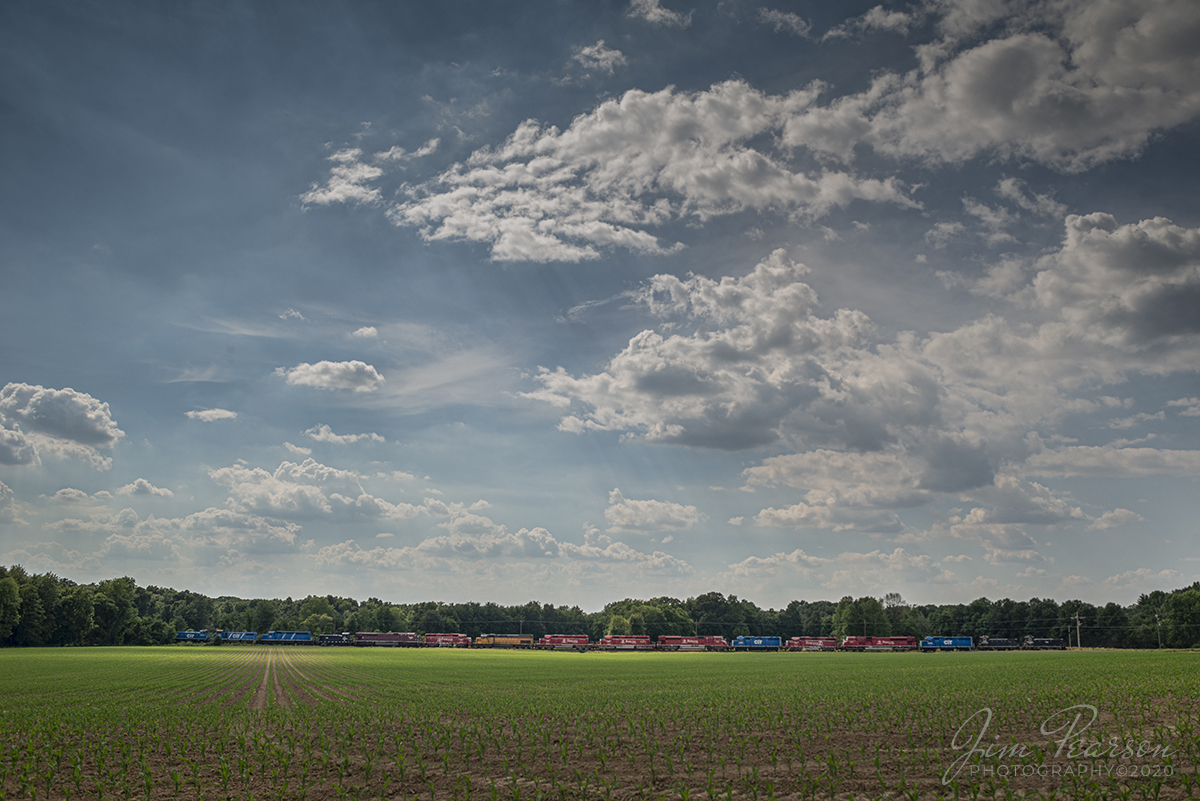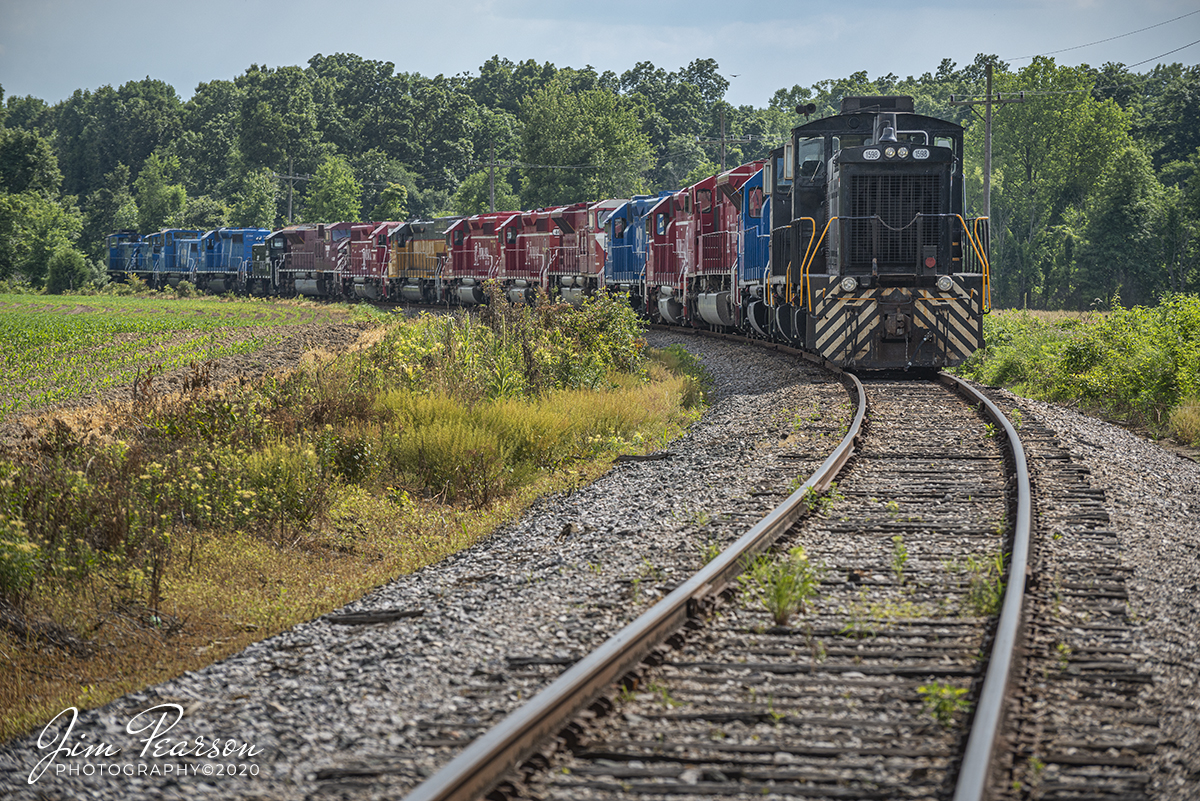July 21, 2020 – CSX K815-19 with CP 7021 approaches milepost 278 on the CSX CE&D Subdivision at Darmstadt, Indiana with a loaded phosphate train as it heads southbound with every railfan between here and south of Nashville, TN waits for his arrival at their location.
The wait however was a bit long as it stopped at Howell Yard in Evansville, Indiana where it dropped off all its cars, changed crews and picked up a load of mixed freight before continuing it’s run south on the Henderson Subdivision. This was my first catch of one of these units!
Canadian Pacific unveiled 5 of these specially painted locomotives in November of 2019 on Remembrance Day in Canada and Veterans Day in the U.S. honoring the culture and history of the armed forces. The five Electro-Motive Diesel SD70ACUs will take the message of military pride across the CP system.
CP 7020 wears North Atlantic Treaty Organization green, which the Canadian and U.S. armies apply to fighting vehicles and equipment serving in temperate climates.
CP 7021 wears the sand colour that the Canadian and U.S. armies apply to fighting vehicles and equipment serving in arid climates.
CP 7022 wears the grey, red and black colour pattern of modern Canadian and American warships.
CP 7023 wears a two-tone gray paint scheme designed after the livery applied to Canadian and American fighter jets.
CP 6644 wears the camouflage colours applied to Royal Canadian Air Force “Spitfire” fighter planes flown at the Allied invasion of Normandy, France, on June 6, 1944.
Tech Info: Full Frame Nikon D800, RAW, Sigma 150-600 @ 460mm, f/6, 1/320, ISO 360.
